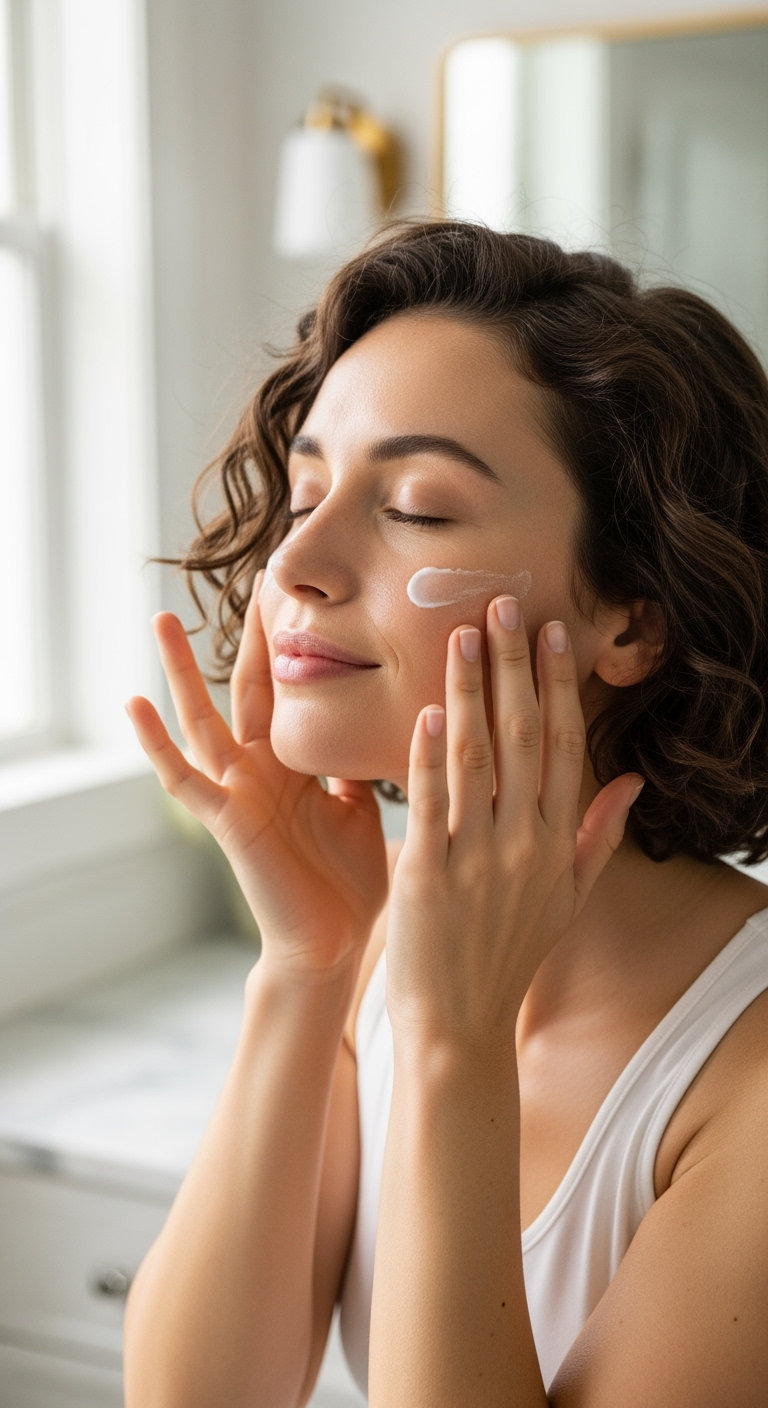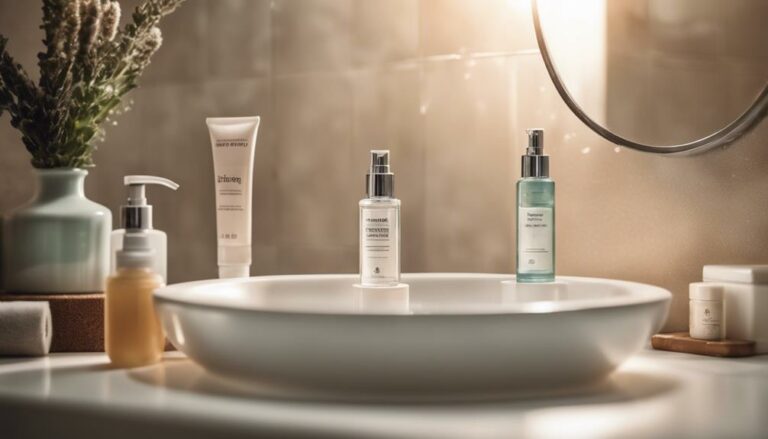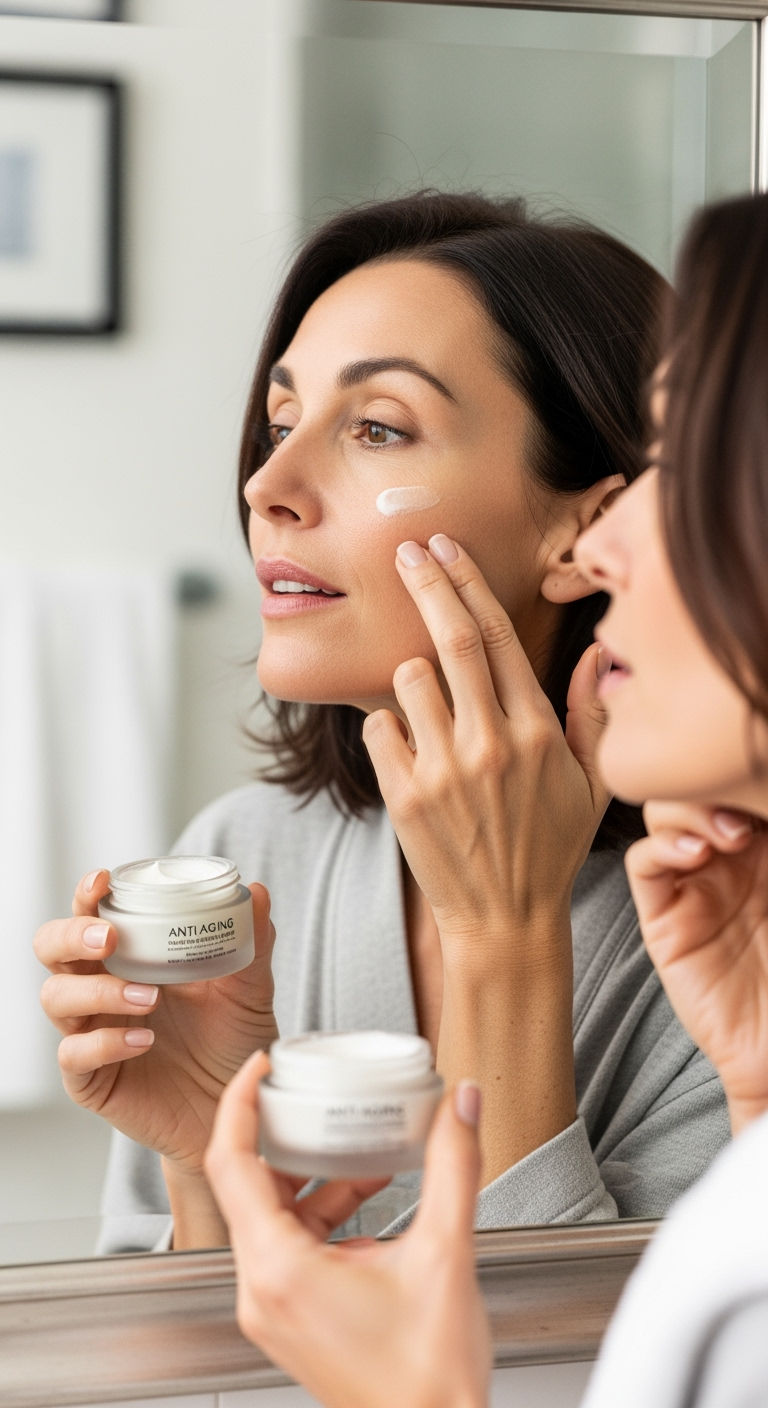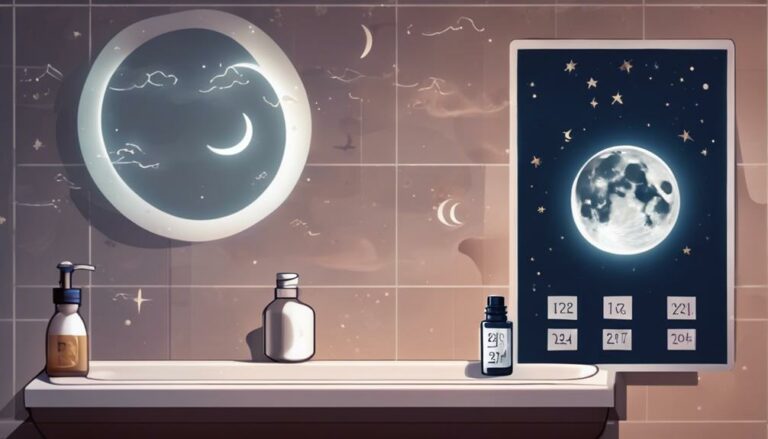The Right Time to Moisturize: Your No-Fuss Guide to Happy, Hydrated Skin
Moisturizer is one of those products that lives in everyone’s bathroom cabinet, but not everyone uses it right. Some people slather it on in the morning, some only at night, and a few save it for when their face feels like the Sahara Desert. The truth? When and how you use moisturizer can make or break your skin barrier, your glow, and even how well your makeup sits.
If you’ve ever asked yourself, “When exactly am I supposed to use moisturizer?”, you’re not alone. Let’s break it down step by step – because your skin deserves a schedule that actually works.
Table of Contents
Why Moisturizer Matters (Yes, Even If You’re Oily)

First things first: moisturizer isn’t just about “adding moisture.” It’s about sealing in hydration and keeping your skin barrier (that outer protective layer) happy and intact.
- If you’re dry → Moisturizer helps replenish what your skin is missing.
- If you’re oily → It keeps your skin balanced so you don’t overproduce oil.
- If you’re sensitive → A gentle moisturizer calms irritation and strengthens your barrier.
In other words, skipping moisturizer is like skipping breakfast – zyou might get away with it, but your skin will eventually throw a fit.
The Golden Rule: Apply Moisturizer When Your Skin Is Damp

Here’s a little insider trick: moisturizer works best when your skin is slightly damp, not bone dry. That’s because moisturizers are designed to trap water in your skin. If there’s no water to lock in, you’re just applying a layer of cream or lotion without much payoff.
Pro tip: After cleansing, pat (don’t rub!) your skin with a towel so it’s still a little dewy, then go in with your moisturizer.
Morning vs. Night: Do You Really Need Both?

Short answer: yes. Long answer: let’s break it down.
Morning Moisturizer Routine
In the morning, your moisturizer is like the last step of your prep team before sunscreen and makeup.
- Go for a lightweight formula (gel or lotion textures are great).
- Look for antioxidants like vitamin C if you want extra protection against pollution and UV.
- Always, always follow with sunscreen—think of them as best friends that should never be separated.
Best time to moisturize in the AM: right after cleansing, before SPF and makeup.
Night Moisturizer Routine
At night, your skin is in repair mode, which means your moisturizer can work harder for you.
- Reach for something richer or creamier, especially if your skin leans dry.
- If you use retinol, acids, or other actives, your nighttime moisturizer will help buffer any irritation.
- This is also a good time to use formulas with ceramides, peptides, or hyaluronic acid—ingredients that replenish and restore while you sleep.
Best time to moisturize in the PM: right after your nightly cleanse (and serums, if you use them).
When Else Should You Moisturize?

Beyond the classic morning and night routine, there are a few other moments when moisturizer can swoop in and save the day:
After a Shower
Hot water (even though it feels amazing) strips your skin of natural oils. Applying moisturizer within a few minutes of stepping out locks hydration back in.
After Exfoliation
Whether you used a scrub or a chemical exfoliant, your skin needs soothing. Moisturizer will calm and rehydrate freshly exfoliated skin.
After Sun Exposure
Even if you wore SPF like a champ, sun can leave your skin feeling tight and parched. A cooling, hydrating moisturizer will help restore balance.
During Flights or Long Road Trips
Airplane air is notoriously dry, and even long car rides with AC blasting can suck the life out of your skin. A travel-size moisturizer in your bag can be a lifesaver.
Anytime Your Skin Feels Tight
Your skin is smarter than you think. If it feels tight, itchy, or uncomfortable, that’s your signal: time to moisturize.
What About Makeup?

Yes, moisturizer and makeup can absolutely coexist. In fact, moisturizer is what makes makeup glide on smoothly instead of clinging to dry patches.
The secret: give your moisturizer a couple of minutes to absorb before applying foundation or primer. This way, your skin drinks up the hydration, and your makeup sits beautifully on top.
How Much Moisturizer Should You Use?

Here’s where a lot of people go wrong: more doesn’t always mean better.
- For the face → a pea-to-nickel size amount (depending on texture) is usually perfect.
- For the body → think about one pump per limb, and don’t forget your neck and chest (they age, too!).
Does Skin Type Change When You Moisturize?

Kind of. The right moisturizer will balance your skin over time.
- If you’re oily and skip moisturizer, your skin might actually produce more oil to make up for it.
- If you’re dry and use the wrong formula, you might still feel tight and flaky.
- If you’re sensitive, fragrance or harsh ingredients in your moisturizer can trigger flare-ups.
That’s why finding the right formula matters just as much as when you use it.
Seasonal Shifts: When to Switch Things Up

Your skin doesn’t live in a vacuum—it reacts to the weather.
- In winter: Cold air outside + heaters inside = dry, thirsty skin. Go for thicker creams and balms.
- In summer: Humidity and sweat can make heavy creams feel suffocating. Switch to lighter gels or oil-free lotions.
- During transitional seasons (spring/fall): Mix and match. You might need something richer at night and lighter during the day.
The Bottom Line
Moisturizer isn’t optional. It’s one of the simplest, most effective steps you can take to keep your skin healthy, plump, and glowing.
The right time to apply it? Morning and night, always on damp skin, and any time your skin is sending SOS signals. Think of it like brushing your teeth: not glamorous, not complicated, but absolutely non-negotiable.
Your future self—wrinkle-free, radiant, and dewy—will thank you.






